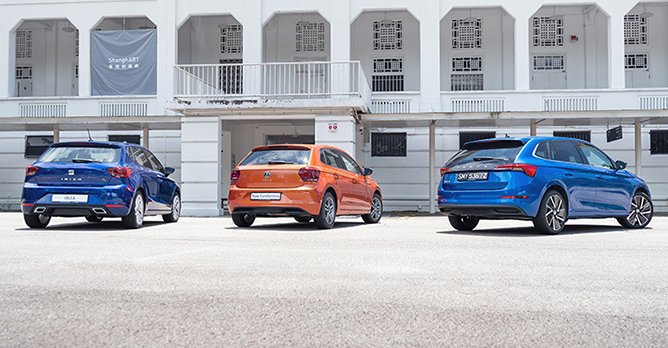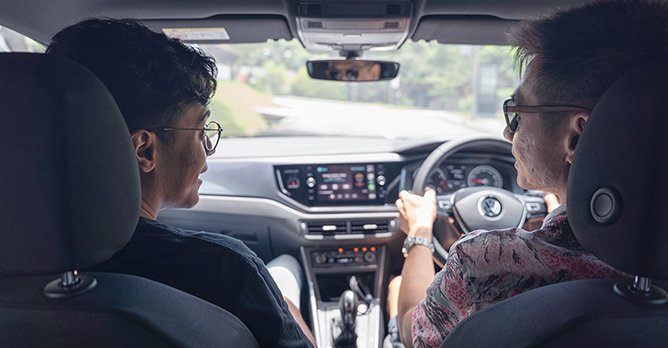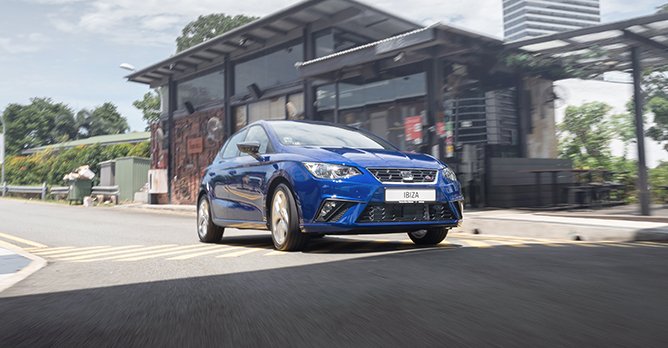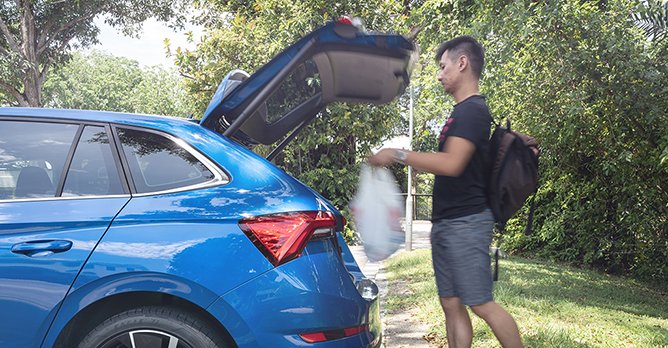Triplets born differently from the same family tree
28 Apr 2021|17,878 views
There is an extraordinary 2018 documentary (available now on Netflix) that you should watch called Three Identical Strangers, which tells the remarkable yet infuriatingly bizarre story of a set of identical triplets. Without giving too much away, the documentary explores the old age question of 'nature vs nurture', and wonders, is there really such a thing as 'identical triplets'?
So wait, what does that have to do with cars?

As more brands move towards modular platforms, technology sharing and increasing economies of scale, will cars increasingly become more identical? Or how do brands still distinguish themselves from each other when it comes to producing cars?
Here, we look at three examples from the Volkswagen Group. They may all be built on the same platform (VW's compact A0 platform) and share many similar mechanical parts, but does that mean that they are indistinguishable from one another? Or does each brand bring its own unique approach (the aforementioned 'nurture' part of the equation) to create cars that are distinct from one another?
Seat Ibiza: The edgy rebel
The Seat Ibiza's approach to the compact hatchback is most certainly focused on a sporty edginess. As far as style goes, it's quite literally the most edgy, with its pinched out lines, angular front-end and athletic demeanour.
On the road, the Ibiza also definitely ups the ante when it comes to dynamism - the sharper steering, agile handling and all-around spunkiness definitely speaks to its athletic intentions. The fact that it's not quite so common on the road as well? That adds to its individuality, too.
Skoda Scala: The sensible grown-up
With the Skoda Scala, sensibility and practicality is the name of the game. The 467-litre boot is frankly massive for a car in this class, and that speaks to the approach that the brand has taken with this platform. Built to the maximum possible dimensions on the A0 platform, the Scala delivers superior space compared to its two twin brothers.
On-the-road, the Scala drives sensibly and effortlessly. It may not be particularly exciting to drive, but the upside is that there's a level of cruising comfort that you won't find in the other two. This is the grown-up of the family, if you will.
Volkswagen Polo: The trendy Gen-Z

The Polo also looks to strike a keen balance between spirited driving and practical commuting. It light and on its feet and perky to drive, while still retaining and easy-going nature on longer drives.
As we can see, while this triplet of cars find their genesis in the same set of mechanical DNA, the different individual approaches by the three brands result in three cars that each have their own distinct personality and character. Just because they are born from the same genetic formula doesn't mean that they evolve to be exactly the same. Similar, but not quite identical.
Identical triplets? Perhaps there's no such thing at all...
There is an extraordinary 2018 documentary (available now on Netflix) that you should watch called Three Identical Strangers, which tells the remarkable yet infuriatingly bizarre story of a set of identical triplets. Without giving too much away, the documentary explores the old age question of 'nature vs nurture', and wonders, is there really such a thing as 'identical triplets'?
So wait, what does that have to do with cars?

As more brands move towards modular platforms, technology sharing and increasing economies of scale, will cars increasingly become more identical? Or how do brands still distinguish themselves from each other when it comes to producing cars?
Here, we look at three examples from the Volkswagen Group. They may all be built on the same platform (VW's compact A0 platform) and share many similar mechanical parts, but does that mean that they are indistinguishable from one another? Or does each brand bring its own unique approach (the aforementioned 'nurture' part of the equation) to create cars that are distinct from one another?
Seat Ibiza: The edgy rebel
The Seat Ibiza's approach to the compact hatchback is most certainly focused on a sporty edginess. As far as style goes, it's quite literally the most edgy, with its pinched out lines, angular front-end and athletic demeanour.
On the road, the Ibiza also definitely ups the ante when it comes to dynamism - the sharper steering, agile handling and all-around spunkiness definitely speaks to its athletic intentions. The fact that it's not quite so common on the road as well? That adds to its individuality, too.
Skoda Scala: The sensible grown-up
With the Skoda Scala, sensibility and practicality is the name of the game. The 467-litre boot is frankly massive for a car in this class, and that speaks to the approach that the brand has taken with this platform. Built to the maximum possible dimensions on the A0 platform, the Scala delivers superior space compared to its two twin brothers.
On-the-road, the Scala drives sensibly and effortlessly. It may not be particularly exciting to drive, but the upside is that there's a level of cruising comfort that you won't find in the other two. This is the grown-up of the family, if you will.
Volkswagen Polo: The trendy Gen-Z

The Polo also looks to strike a keen balance between spirited driving and practical commuting. It light and on its feet and perky to drive, while still retaining and easy-going nature on longer drives.
As we can see, while this triplet of cars find their genesis in the same set of mechanical DNA, the different individual approaches by the three brands result in three cars that each have their own distinct personality and character. Just because they are born from the same genetic formula doesn't mean that they evolve to be exactly the same. Similar, but not quite identical.
Identical triplets? Perhaps there's no such thing at all...
Thank You For Your Subscription.























